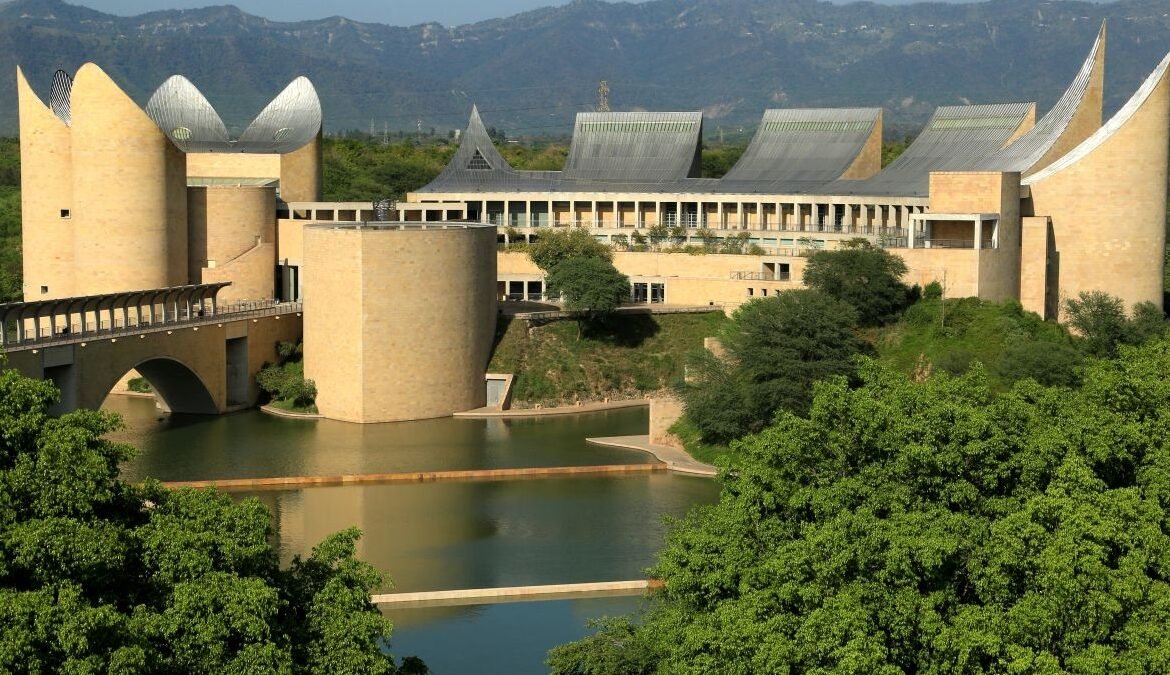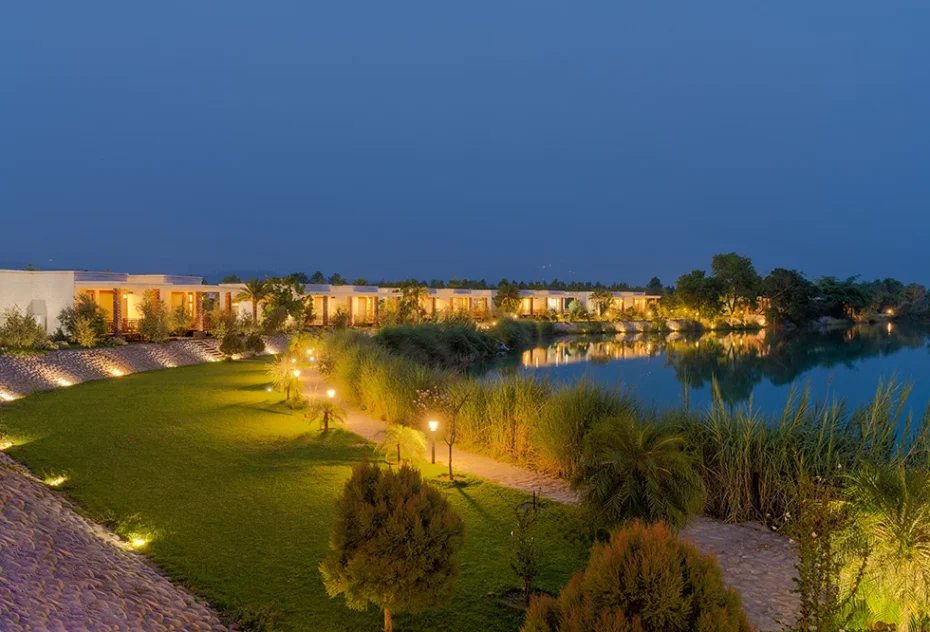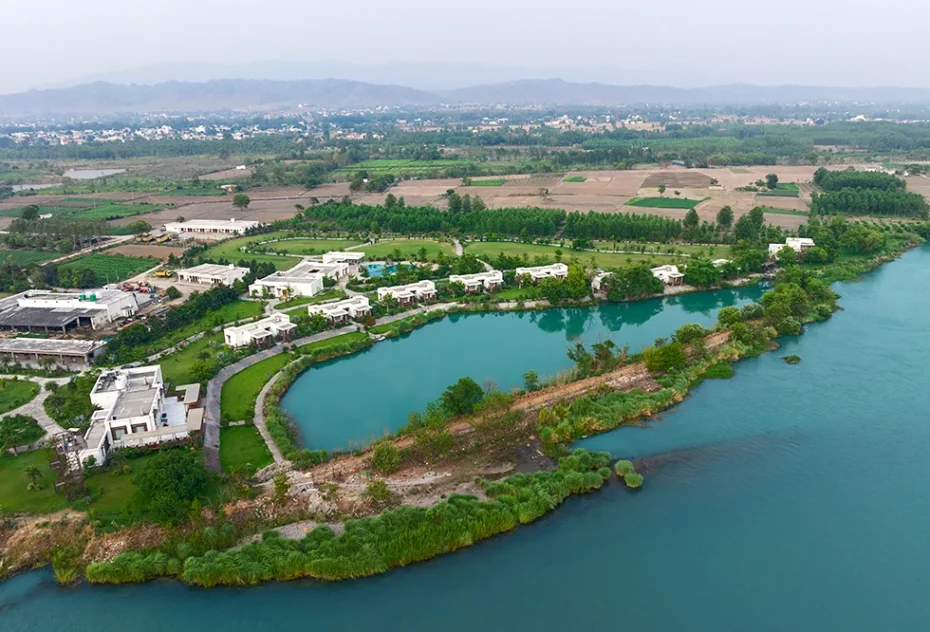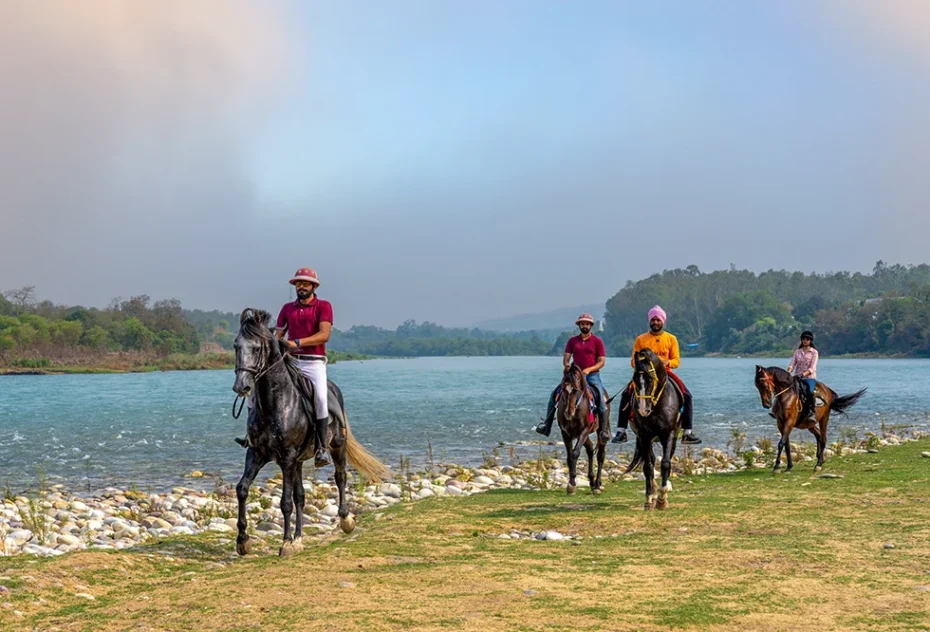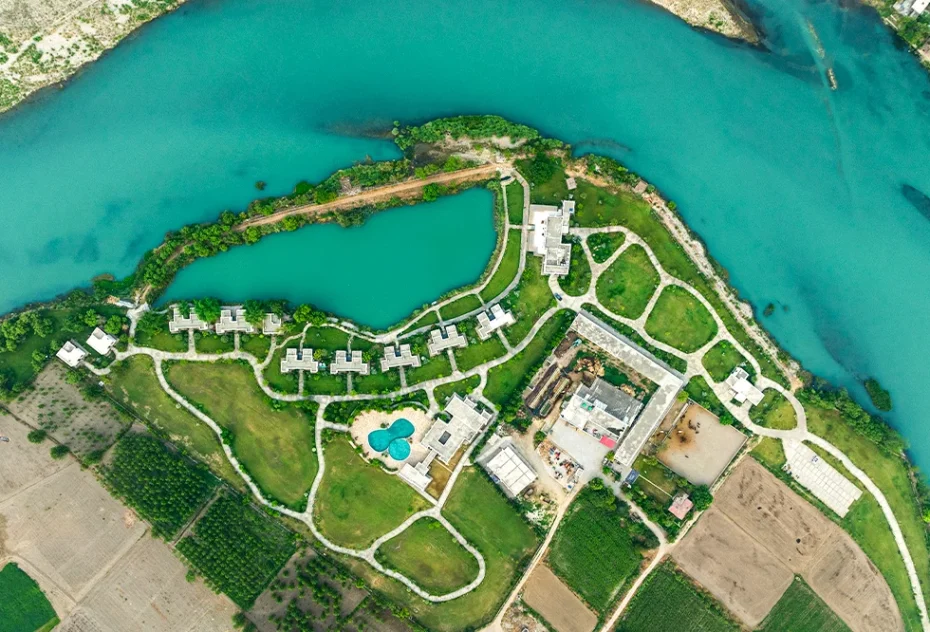Punjab, known for its rich history and vibrant culture, is home to one of the most significant Sikh heritage museums—Virasat-e-Khalsa Museum. Located in the holy city of Anandpur Sahib, this museum stands as a tribute to Sikh history and culture, showcasing the journey of Sikhism from its origins to modern times.
As an essential part of Punjab tourism, the Virasat-e-Khalsa Museum attracts thousands of visitors each year, offering an immersive experience into the teachings of Sikh Gurus and the struggles of the Khalsa Panth history. With its breathtaking Sikhism architecture and state-of-the-art exhibits, the museum provides a deep insight into Sikh heritage and legacy.
Whether you are a history enthusiast, a spiritual seeker, or a tourist exploring historical places in Punjab, a visit to this Sikh religion museum is a must. This blog will guide you through its history, architecture, exhibits, travel tips, and everything you need to know about Virasat-e-Khalsa Anandpur Sahib.
Contents
- Virasat-e-Khalsa Museum History
- Architectural Brilliance of Virasat-e-Khalsa
- Modern Sikh Architecture
- Sikh Museum Design and Concept
- What to Expect Inside the Museum?
- Exploring Sikh History and Culture
- Sikh Heritage and Legacy in Visual Form
- Best Time to Visit Virasat-e-Khalsa Anandpur Sahib
- Special Events and Festivals
- How to Reach Virasat-e-Khalsa?
- Virasat-e-Khalsa Images: A Glimpse into Sikh Heritage
- Virasat-e-Khalsa Inside Images
- Virasat-e-Khalsa Tickets, Ticket Price & Timing
- Virasat-e-Khalsa Tickets & Entry Details
- Virasat-e-Khalsa Timing
- Why Virasat-e-Khalsa is a Must-Visit?
- Luxury Hotel Near Virasat-e-Khalsa
- 1. Olive Trotter Resort – A Luxurious Stay Near Virasat-e-Khalsa
- 2. Anand at The Sutlej
- 3. The Kikar Lodge
- FAQ
- 1. How much is the ticket for Virasat-e-Khalsa?
- 2. What is special in Virasat-e-Khalsa?
- 3. Is Virasat-e-Khalsa free?
- 4. How much did the Virasat-e-Khalsa building cost?
- 5. Who designed Virasat-e-Khalsa?
- 6. Who built Khalsa?
- 7. Is photography allowed in Virasat-e-Khalsa?
- 8. What are the 5 items of Khalsa?
- 9. What is the meaning of 96 crore Khalsa?
- 10. What is the Khalsa kids?
- 11. In which district is Virasat-e-Khalsa?
- 12. Who can join the Khalsa?
- Conclusion
Virasat-e-Khalsa Museum History

The Virasat-e-Khalsa Museum was established to honor Guru Gobind Singh history and the formation of the Khalsa Panth history. It was inaugurated on November 25, 2011, in Anandpur Sahib, a city that holds great importance in Sikh history and culture. This location is where Guru Gobind Singh Ji legacy was cemented with the creation of the Khalsa in 1699.
The museum serves as a bridge between the past and present, preserving Sikh heritage and legacy through interactive displays, rare manuscripts, and historical artifacts. As one of the most significant Sikh history museums in India, it provides visitors with an in-depth understanding of Sikhism’s evolution, including key events from Sikh battles and history.
Built with the vision of Sikhism cultural preservation, Virasat-e-Khalsa Anandpur Sahib aims to educate people about Sikh gurus and their teachings. It beautifully narrates the story of Sikhism, from Guru Nanak Dev Ji’s spiritual wisdom to the valiant sacrifices of Sikh warriors.
This Sikh religion museum is not just a tourist attraction but also a source of inspiration for those who seek knowledge about the principles of Sikh history and culture. Through modern technology and traditional storytelling, it ensures that the values of Sikhism are passed down to future generations.
Architectural Brilliance of Virasat-e-Khalsa

Modern Sikh Architecture
The Virasat-e-Khalsa Museum is not just a historical center but also an architectural masterpiece. Designed by the renowned architect Moshe Safdie, this stunning structure perfectly blends traditional Sikh elements with modern aesthetics. Inspired by Sikhism architecture, the museum symbolizes strength, spirituality, and the enduring legacy of Sikhism.
The complex is divided into two parts, resembling open hands—one symbolizing giving and the other receiving. This design represents the Sikh principle of sewa (selfless service) and community sharing. The entire structure, made of sandstone and stainless steel, reflects the rich Sikh heritage and legacy while embracing contemporary construction techniques.
Sikh Museum Design and Concept
The museum is surrounded by a tranquil water body, which enhances its grandeur and aligns with cultural heritage monuments found in India. Its design elements, including large curved roofs and airy corridors, are inspired by Sikh history and culture, offering visitors a serene and immersive experience.
Inside, the museum follows an innovative approach to storytelling. It uses advanced digital technology, 3D models, and multimedia presentations to narrate Sikh battles and history, making the experience engaging for visitors of all ages.
One of the most striking features of Virasat-e-Khalsa Museum is its lighting system. Natural light enters through strategically placed skylights, illuminating the exhibits in a way that enhances their impact. This unique Sikh museum design ensures that every corner of the museum reflects the glory of Sikhism cultural preservation.
With its breathtaking architecture and spiritual atmosphere, Virasat-e-Khalsa Anandpur Sahib is undoubtedly one of the most magnificent cultural heritage monuments in the world.
What to Expect Inside the Museum?
Exploring Sikh History and Culture
The Virasat-e-Khalsa Museum offers a deeply immersive experience into Sikh history and culture, making it one of the most remarkable Sikh history museums in India. From the moment you enter, you are transported through time, witnessing the evolution of Sikhism from its inception to the present day.
The museum is divided into different galleries, each narrating a unique aspect of Sikh heritage and legacy. Visitors can explore:
- The Life and Teachings of Sikh Gurus – A visual journey through the lives of the ten Sikh gurus and their teachings.
- Guru Gobind Singh Ji Legacy – A tribute to the great warrior-saint, showcasing his role in Sikh battles and history.
- Khalsa Panth History – The formation of the Khalsa and its impact on Sikhism.
- Sikh Cultural Evolution – How Sikh traditions, attire, and language have evolved over centuries.
Sikh Heritage and Legacy in Visual Form
The museum brings history to life through advanced digital storytelling, 3D models, paintings, and audio-visual presentations. Visitors can experience:
- Holographic Displays – Animated narrations of Sikh scriptures and Sikhism cultural preservation efforts.
- Panoramic Artworks – Massive hand-painted murals depicting key moments in Guru Gobind Singh history.
- Multimedia Theatre – A digital retelling of Sikh battles and history, offering a cinematic experience.
Each gallery is designed to provide a meaningful and interactive experience, ensuring that visitors of all ages can connect with Sikh history and culture in an engaging way.
Whether you are a history enthusiast or a spiritual seeker, Virasat-e-Khalsa Museum offers a profound insight into Sikh heritage and legacy, making it a must-visit attraction in Punjab tourism.
Best Time to Visit Virasat-e-Khalsa Anandpur Sahib
The Virasat-e-Khalsa Museum in Anandpur Sahib is open throughout the year, but the best time to visit depends on weather conditions and local events. For a comfortable and enriching experience, consider visiting during:
- Winter (October to March) – The weather is cool and pleasant, making it ideal for exploring Sikh history and culture without discomfort.
- Spring (March to April) – The surroundings of Anandpur Sahib bloom with greenery, enhancing the beauty of this Sikh heritage museum.
- During Sikh Festivals – Visiting during major Sikh festivals like Gurpurab or Hola Mohalla adds a unique cultural and spiritual dimension to your trip. These festivals bring the museum to life with special events and celebrations, showcasing Sikhism cultural preservation at its best.
Also Read: Naina Devi Temple: History, Significance, Travel Guide & Must-Know Facts
Special Events and Festivals

For an unforgettable experience, consider visiting Virasat-e-Khalsa Museum during major Sikh celebrations, such as:
- Guru Gobind Singh History Celebrations – These events honor the legacy of Guru Gobind Singh Ji, highlighting his role in Sikh battles and history. Special exhibitions, kirtan programs, and cultural performances make this period a truly immersive experience.
- Hola Mohalla – This grand Sikh festival is held annually in Anandpur Sahib, featuring martial arts demonstrations, religious gatherings, and colorful processions that showcase the Sikh heritage and legacy.
- Gurpurab Celebrations – The birthdays of Sikh Gurus, especially Guru Nanak Dev Ji and Guru Gobind Singh Ji, are marked with large gatherings, kirtans, and educational exhibits on Sikhism cultural preservation.
During these festivals, the museum organizes special exhibitions and cultural programs, offering visitors a deeper insight into Sikh gurus and their teachings.
Visiting Virasat-e-Khalsa during these times not only enhances the experience but also provides an opportunity to witness the Sikh religion museum in its most vibrant and spiritual form.
How to Reach Virasat-e-Khalsa?

Visiting the Virasat-e-Khalsa Museum is easy, as it is well-connected by air, rail, and road. Whether you’re traveling from Chandigarh, Amritsar, or other major cities, you’ll find multiple transport options to reach this Sikh heritage museum in Anandpur Sahib.
Address: 6GM5+M27, Anandgarh – Kesgarh Road, Near Qila, Khalsa Heritage Memorial Complex, Anandpur Sahib, Punjab 140118
Website: virasat-e-khalsa.net
By Air:
The nearest airport to Virasat-e-Khalsa is:
- Chandigarh International Airport (90 km away) – Well-connected to major Indian cities like Delhi, Mumbai, and Bangalore. From the airport, you can hire a taxi or take a bus to Anandpur Sahib.
- Sri Guru Ram Dass Jee International Airport, Amritsar (180 km away) – If traveling from abroad or northern India, this airport is another good option.
By Rail:
- The nearest railway station is Anandpur Sahib Railway Station, which is well-linked to Chandigarh, Amritsar, and Delhi.
- From the station, local taxis and auto-rickshaws are available for a short ride to the Sikh history museum.
By Road:
- Virasat-e-Khalsa is easily accessible by road, making it a great option for those exploring Punjab cultural tourism.
- Major road distances:
- Chandigarh to Virasat-e-Khalsa – 85 km (approx. 2-hour drive)
- Amritsar to Virasat-e-Khalsa – 180 km (approx. 4-hour drive)
- Delhi to Virasat-e-Khalsa – 320 km (approx. 6-hour drive)
- Well-maintained highways connect Anandpur Sahib with other places to visit in Punjab, making the journey smooth and comfortable.
For visitors keen on Sikh history and culture, a road trip to Virasat-e-Khalsa Museum offers a scenic and enriching experience.
Virasat-e-Khalsa Images: A Glimpse into Sikh Heritage
If you are eager to explore the breathtaking architecture and historical exhibits of this iconic museum, Virasat-e-Khalsa images offer a stunning visual journey. The museum’s grand design, serene surroundings, and beautifully curated galleries make it a must-visit destination for history lovers.
Virasat-e-Khalsa Inside Images
Step inside to witness an immersive experience through Virasat-e-Khalsa inside images, showcasing intricately designed exhibits, stunning murals, and digital displays that bring Sikh history to life. The galleries are filled with vibrant storytelling panels, artifacts, and audiovisual presentations that highlight the rich legacy of Sikhism.
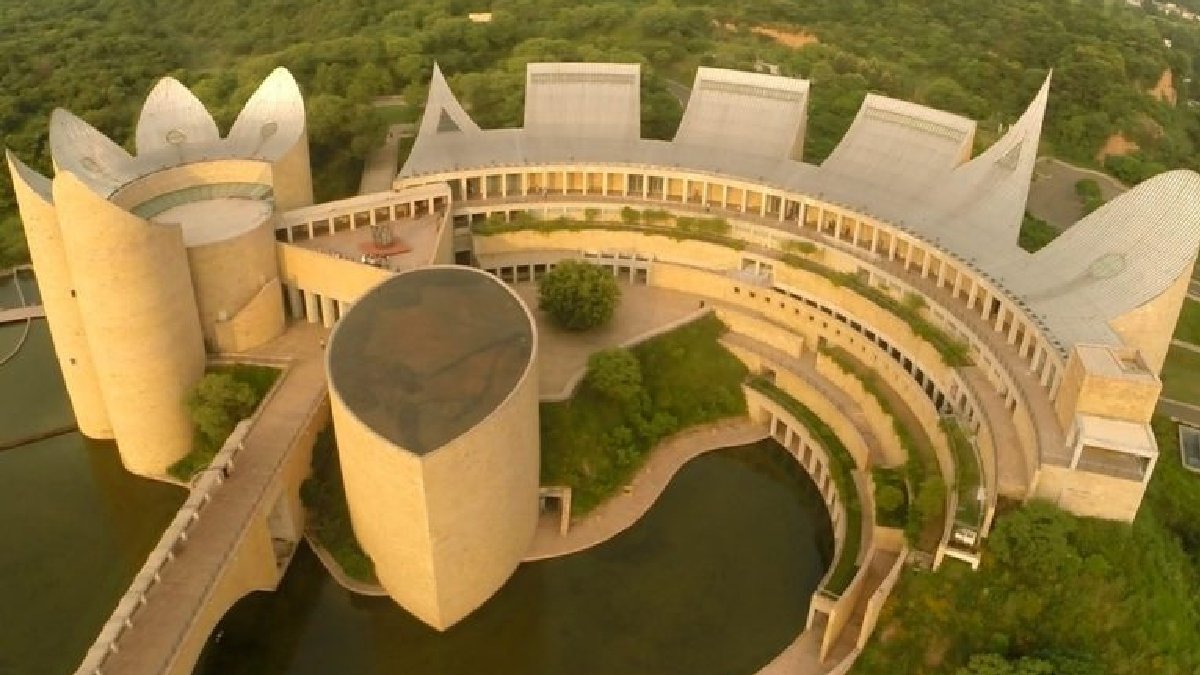







Virasat-e-Khalsa Tickets, Ticket Price & Timing
If you’re planning to visit this iconic Sikh heritage museum, you’ll be pleased to know that Virasat-e-Khalsa tickets are available free of cost for all visitors. This means you can explore the rich history and culture of Sikhism without worrying about an entry fee.
Virasat-e-Khalsa Tickets & Entry Details
Many tourists wonder about the Virasat-e-Khalsa ticket price, but the good news is that there is no ticket price for entry. Whether you’re a history enthusiast or a traveler exploring Punjab, you can visit this museum without any charges. The Virasat-e-Khalsa ticket price remains free, making it an excellent destination for families, students, and history lovers.
Virasat-e-Khalsa Timing
To plan your visit effectively, it’s essential to know the Virasat-e-Khalsa timing:
- Tuesday to Sunday: 10:00 AM – 5:00 PM
- Closed on Mondays
Make sure to check the latest updates before visiting, as Virasat-e-Khalsa timing may vary on special occasions or public holidays.
Why Virasat-e-Khalsa is a Must-Visit?
Virasat-e-Khalsa Museum is a must-visit for:
- Students and Historians – It provides a deep insight into Sikh history and culture, including Guru Gobind Singh history, Sikh battles and history, and Sikh gurus and their teachings.
- Tourists and Researchers – Ideal for those exploring Sikh religion museums and discovering historical places in Punjab.
- Families and Pilgrims – The museum offers an immersive experience in Sikhism cultural preservation, making it a meaningful visit for all age groups.
Luxury Hotel Near Virasat-e-Khalsa
Anandpur Sahib, home to the Virasat-e-Khalsa Museum, offers a range of accommodations to suit various preferences. While luxury hotels are limited within the town, several comfortable options are available nearby. Here are some notable establishments:
1. Olive Trotter Resort – A Luxurious Stay Near Virasat-e-Khalsa
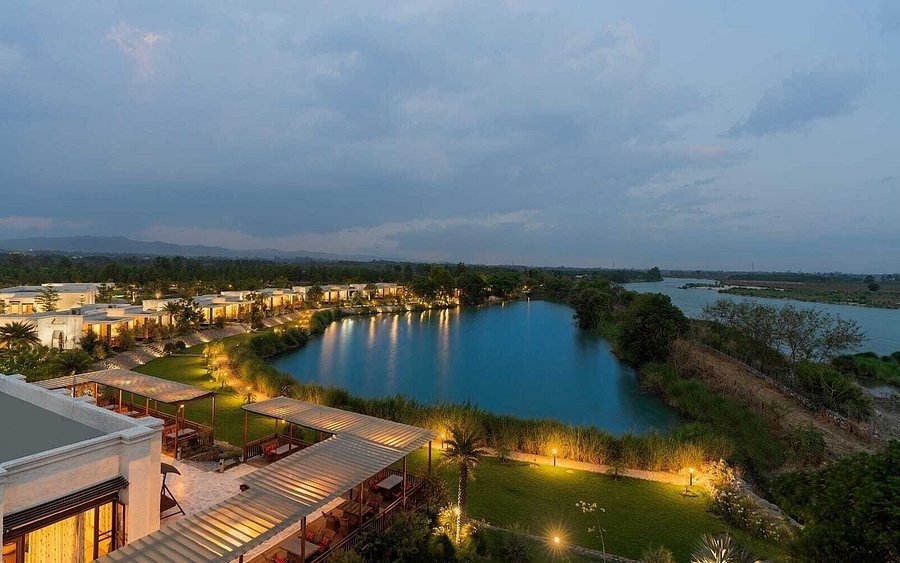
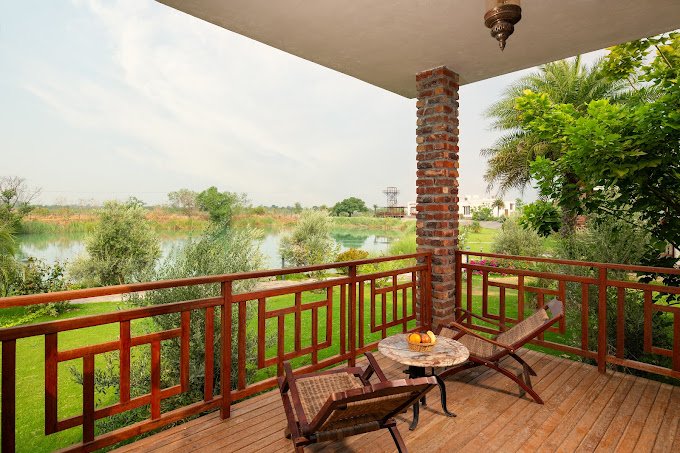
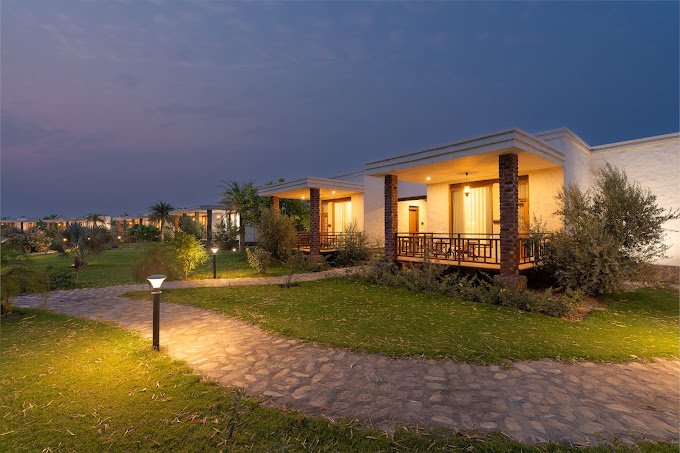
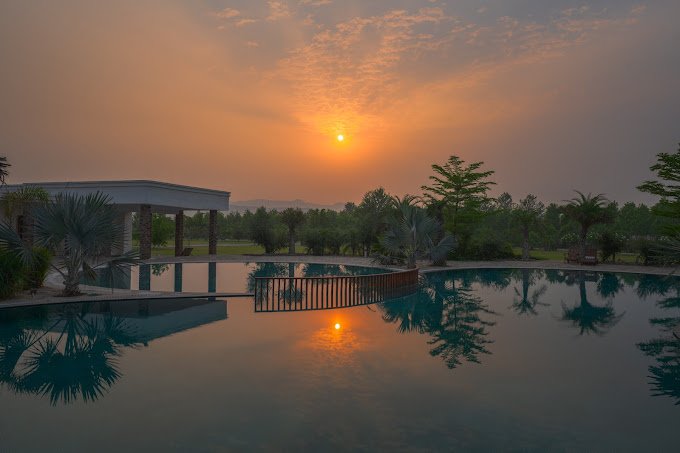
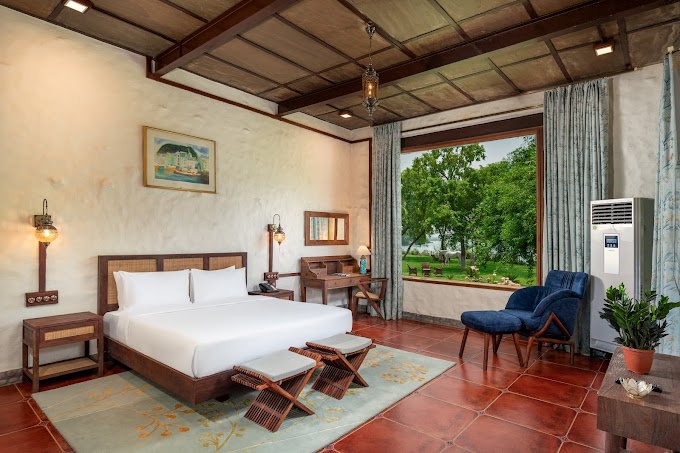
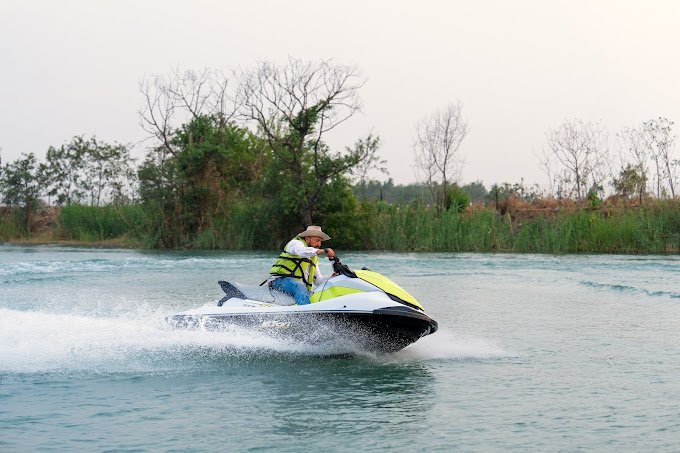

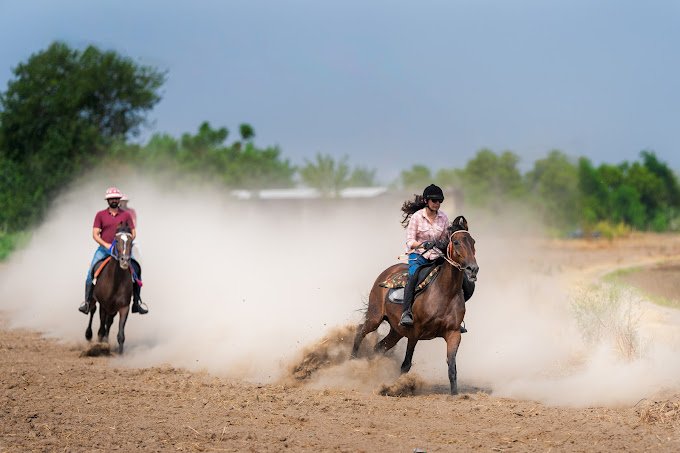
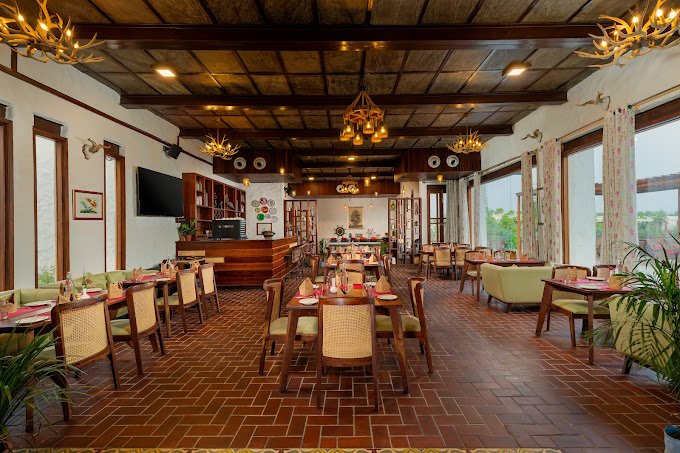
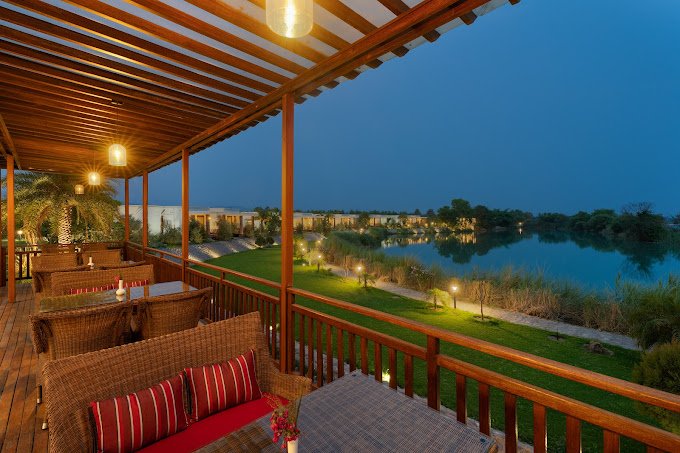
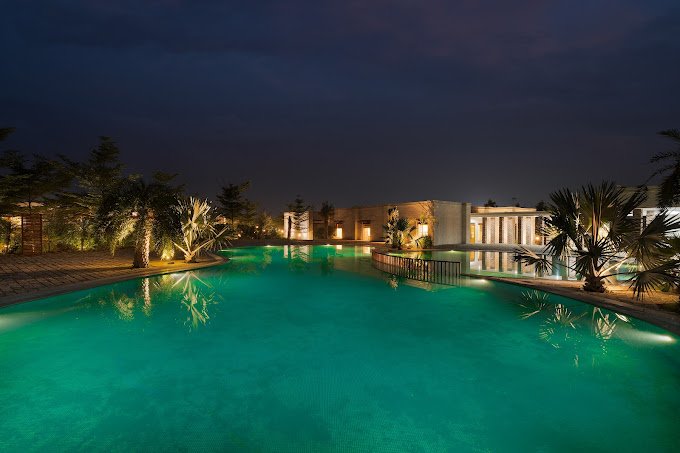
Olive Trotter Resort is a premium retreat located near Anandpur Sahib, offering a perfect blend of luxury, comfort, and nature. This resort provides a serene escape for travelers visiting Virasat-e-Khalsa and other historical sites in the region.
Guests can enjoy well-furnished rooms, top-notch hospitality, and a range of amenities, including an outdoor pool, fine dining restaurants, and spa services. The resort’s tranquil ambiance and lush green surroundings make it an ideal stay for families, couples, and business travelers alike.
With its close proximity to Virasat-e-Khalsa, Olive Trotter Resort is an excellent choice for those looking for a relaxing yet culturally immersive experience in Anandpur Sahib.
Address: Bela Dhiani, Nangal, Punjab 140125
2. Anand at The Sutlej
This riverside retreat provides a peaceful getaway with lush green surroundings and luxurious accommodations. It is ideal for visitors who want to explore the heritage of Virasat-e-Khalsa while enjoying a rejuvenating experience.
3. The Kikar Lodge
Located amidst nature, The Kikar Lodge is a top choice for adventure lovers and luxury seekers. With its spacious cottages, spa, and outdoor activities, it stands out among the finest resorts in Anandpur Sahib.
These resorts ensure a lavish stay with easy access to Virasat-e-Khalsa, making them the best options for travelers seeking comfort and cultural exploration.
FAQ
1. How much is the ticket for Virasat-e-Khalsa?
Virasat-e-Khalsa offers free entry to all visitors.
2. What is special in Virasat-e-Khalsa?
It showcases the rich history, culture, and spiritual legacy of Sikhism through immersive exhibits and multimedia presentations.
3. Is Virasat-e-Khalsa free?
Yes, entry to Virasat-e-Khalsa Museum is completely free for visitors.
4. How much did the Virasat-e-Khalsa building cost?
The estimated cost of constructing Virasat-e-Khalsa was around ₹350 crore.
5. Who designed Virasat-e-Khalsa?
The museum was designed by Moshe Safdie, a renowned Israeli-Canadian architect.
6. Who built Khalsa?
The Khalsa was founded by Guru Gobind Singh Ji on April 13, 1699.
7. Is photography allowed in Virasat-e-Khalsa?
No, photography and videography are not allowed inside the museum.
8. What are the 5 items of Khalsa?
The Five Ks of Khalsa are Kesh (uncut hair), Kara (iron bracelet), Kanga (wooden comb), Kachera (cotton undergarment), and Kirpan (sword).
9. What is the meaning of 96 crore Khalsa?
It refers to Guru Gobind Singh Ji’s vision of a strong Sikh community that would grow to 96 crore (960 million).
10. What is the Khalsa kids?
Khalsa Kids refers to Sikh children who are raised with the values and teachings of Sikhism, following the principles of the Khalsa.
11. In which district is Virasat-e-Khalsa?
It is located in Anandpur Sahib, in the Rupnagar district of Punjab, India.
12. Who can join the Khalsa?
Anyone willing to follow Sikh teachings and commit to the Khalsa way of life can join by undergoing the Amrit Sanchar (baptism ceremony).
Conclusion
The Virasat-e-Khalsa Museum is more than just a museum—it is a tribute to Sikh history museum India. Visitors gain a deeper understanding of Sikh gurus and their teachings, Guru Gobind Singh history, and Sikh battles and history.
For those passionate about Punjab cultural tourism, this museum is an essential stop to explore the rich heritage of Sikhism.
Plan your trip today and immerse yourself in this iconic Sikh heritage experience! 🚀
Also Read: Top Resorts Near Chandigarh for a Perfect Getaway


